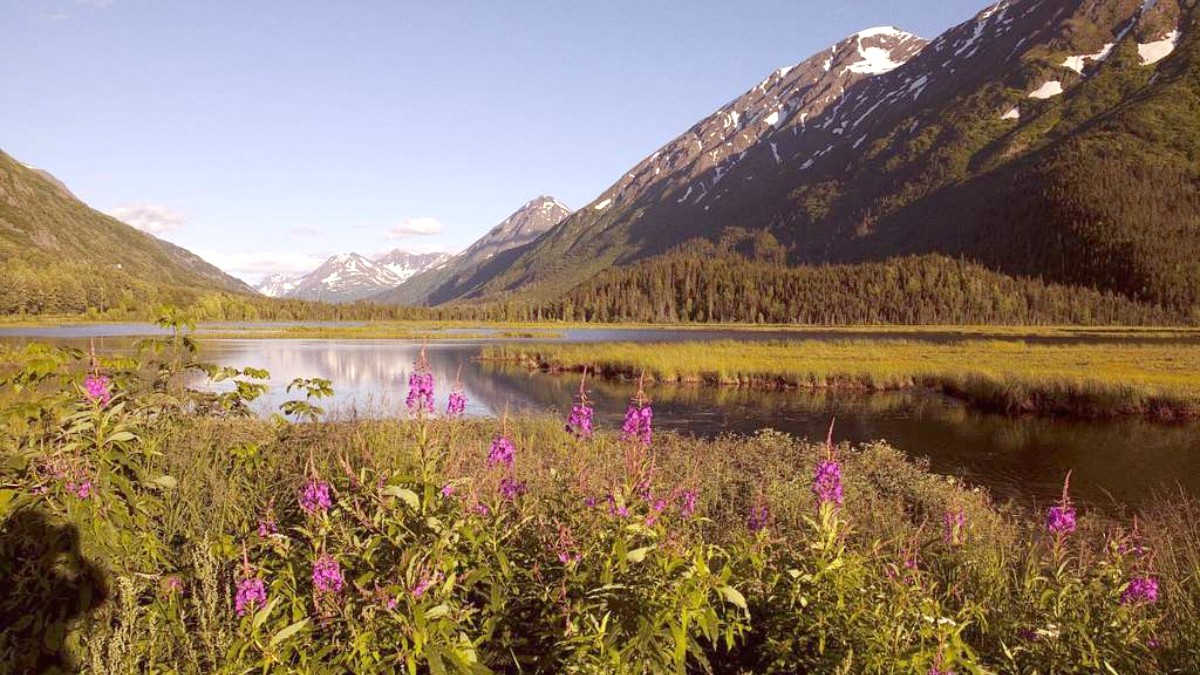
Alaska, USA
Follow the "three-layer system" for effective outdoor comfort. Avoid cotton for any layer, especially for activities that might cause you to sweat or if there is a chance of rain, as cotton absorbs moisture and loses its insulating properties when wet.
Summer: Quick-drying travel pants, long-sleeve shirts for sun protection. Warm hat (beanie) and gloves for boat tours. Swimsuit for hotel hot tubs. Shoulder Seasons: Heavier mid-layers, warm wool or synthetic socks. Waterproof boots. Winter: Heavy-duty insulated winter parka, insulated waterproof pants. Multiple heavy base and mid-layers. Warm hat, insulated gloves/mittens, neck gaiter. Insulated, waterproof winter boots with excellent traction.
Sturdy, waterproof hiking boots with good ankle support are recommended for trails (Exit Glacier). Good traction is helpful.
Waterproof walking shoes or sneakers comfort city strolls. Choose a pair with good support for pavement.
For October-April visits, insulated, waterproof boots with good grip for snow and ice are necessary. Accommodate thicker socks.
Careful organization of travel documents helps prevent issues. Keep both physical and digital copies.
U.S. Standard voltage is 120V at 60 Hz, using Type A/B plugs. International travelers need an universal travel adapter. Check device voltage compatibility; modern electronics are often dual-voltage. Most smartphones compatible with U.S. Networks; confirm 'unlocked' for local SIM. Verizon has good coverage in remote areas. Consider SIM upon arrival at Anchorage Airport.
Waterproof/water-resistant camera recommended for rain and marine activities. Telephoto lens useful for wildlife. Pack extra batteries; cold weather drains them. A dry bag protects electronics and documents from rain/sea spray. Binoculars spot distant wildlife.
Download Google Maps or Apple Maps, AllTrails for hiking. Download offline maps for areas with limited cell service.
AccuWeather, The Weather Channel, or NOAA Weather Radar for forecasts. WhatsApp is popular for international calls and messaging.
Use cloud services like Google Drive or Dropbox to automatically back up photos and documents. Portable hard drive or extra SD cards for photographers.
Pack a personalized health kit to address common travel ailments and specific Alaskan considerations. A standard first aid kit is a good base.
Motion sickness medication is highly recommended for boat tours. Take it at least an hour before your tour. Seward is at sea level, so altitude sickness is not a concern. Repellent with DEET or picaridin is effective against mosquitoes. Sunscreen SPF 50+, a wide-brimmed hat, and UV-protective sunglasses are necessary. Tap water in Seward is safe to drink.
A small daypack holds water, snacks, and layers. A waterproof pack cover protects belongings from rain.
A dry bag keeps personal items safe from splashes. Tour operators supply kayaks, paddles, and life vests. Dress in warm, waterproof layers for boat tours.
An Alaska fishing license is a must for anyone 16 or older. Waterproof waders and jackets are useful for shore fishing. Charter companies usually provide rods, reels, and bait.
A travel neck pillow aids comfort on bus or train journeys. An eye mask and earplugs are especially helpful in summer for sleeping despite extended daylight hours.
A reusable water bottle is smart, Seward has clean tap water. A reusable shopping bag is useful due to Alaska's plastic bag ban. Reusable travel utensils are handy for picnics.
Protects gear from frequent rain and sea spray during excursions.
Useful for outdoor activities, camping, or unexpected rain.
Guards credit cards from electronic skimming attempts.
For backcountry camping to protect food from wildlife.
Create a detailed packing list. Cross off items as you pack them.
Consider a "what if" scenario for each item: what if it rains all day? What if I get a blister? This helps ensure you are prepared.